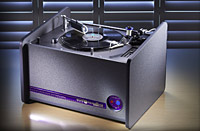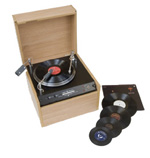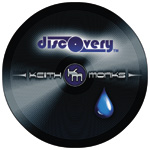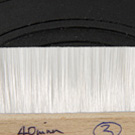Analog in the digital 21st Century
‘Analog’ in the Digital 21st Century:
a Listener’s perspective
The ‘vinyl revival’. From my own searches I am quite aware of the number of people likely to visit this site who would not consider themselves an ‘audiophile’ (and might not even know what one is). Those of you who would should probably skip this next bit…
Mr friend Jonathan Monks is returning to the high-end industry after a 15 year ‘break’ and, having listened to me wax lyrical endlessly on the topic, and feeling the undeniable seismic shift in perspective regarding vinyl that is occurring around the world, he has asked me to write a piece for this site. I don’t regard the world of high fidelity as a closed club – yes, ‘real hi-fi’ is a serious business, but it seems to me the future of this industry hinges on high-end manufacturers taking their esoteric products and being able to appeal to as wide an audience as possible. So, for all of you visitors who do so through mild curiosity about records and record cleaning, this page is for you.
I am also aware of how many budding ‘vinylphiles’ do not know all the technical ins and outs about records and record care (nor want to either) – they simply want to know why they should consider letting records into their lives, and how to look after them properly. Jonathan said he was looking for was something from the perspective of the ‘discerning listener’ - and that, he assures me, is me.
I get a lot of general questions – and, most often, it’s this one: why records, and why now? I’m certainly no engineer on the subject as you will quickly discover (at this point I’ll neatly side-step comments and complaints about inaccuracies and barefaced liberties, please direct them to the owners of this site!), however I do tend to explain things in plain language and simplify stories to make them slightly more accessible/relevant/interesting. In any event you will find the basics of the following tale are correct, it helps make sense of everything Keith Monks Audio seem to be striving for, and I think it might make an interesting story in its own right.
As so many people ask about it, first the basics about analog and digital. A digital recording ‘samples’ an original sound or group of sounds, stores them as a series of numbers, then reassembles these numbers and converts them to ‘analog’ (that is, something amplifiers and speakers and ears can deal with). This it does very accurately, at least on CD (other opinions about MP3 etc are available) and provides sound changes that can make cheap systems sound slightly ‘less cheap’. And, of course, no clicks and pops.
But the digital medium is in fact a facsimile: music reduced to a series of binary digits which can then be resynthesised back into sounds. Not the original sound but a computer’s recreation of it – imagine taking a photo and putting it into a really good quality photocopier, instead of doing a print using the photographic negative. Digital can also add some inherent changes in the sound, a brashness in upper-mid and high notes (often initially mistaken upon the arrival of CD as ‘better’ sound until the novelty wore off) and a harshness overall (which could arguably assist in the appeal of certain styles of music such as electronic dance, but otherwise tends to be less than helpful). Although it gets close, even the best digital technology cannot record and reproduce sound completely accurately and naturally, and the human ear can detect the difference.
All of which makes me sound like some kind of Luddite zealot. Not so – I have a huge CD collection as well which I treasure dearly. It’s just that, when I want to sit down with a piece of music for some serious listening, I will almost always and without really thinking about it reach for the vinyl.
I do own a number of albums on LP which I’ve also bought on CD usually for convenience and, although the latter initially impressed with their ‘brightness’, I’ve always felt there was something else missing, and it leaves a huge void. Something about the mechanics of the original sounds and their analog reproduction, and the way these elements interact with the human ear perhaps. Vinyl to me just makes the music sound more vibrant, involving, stimulating.
Records work completely differently from digital. The Victorians made up for their lack of technology with insight, ingenuity and innovation. They knew how the ear works – an array of small bones and other pieces that vibrate with air movement, hotwired to the brain for ‘translation’. Every time creatures and objects move, this in turn creates movement in the air around them which we hear as sound. Larger or thicker items create slower movements and deeper sounds, while smaller or thinner ones create faster movements and higher sounds – like strings on a guitar. The greater the degree of movement, the louder the sound; the lesser, the quieter.
These pioneers worked out that, if they wanted to copy and reproduce a sound, what was needed was to record it onto a medium that could be covered in a string of ‘undulations’, the shape size and quantity of which could be made as an identical miniature of the dynamics of the original sound. If something small, light and sensitive enough could then be made to travel along these undulations, then it would vibrate in exactly the same degree as each undulation. These miniature vibrations, when suitably amplified, would vibrate the air enough to be heard, and reproduce exactly the same sounds and their dynamics.
Of course music takes time to play and would need a long length of these undulations, so it wasn’t long before they worked out that this length could be compacted by making it into a spiral. ‘78s’ were the first mass-produced medium of their kind, early twentieth century technology descended from nineteenth century wax cylinders and the like. And although the sound quality later improved dramatically, the actual technology needed only slight modification in the 1950s to create the LPs and 45s that were still thriving nearly forty years later.
When people say analog audio is more ‘natural’, they likely as not do so because it appears more ‘real’. Put simply, an analog record has a direct link with its source - it contains the true original sound with all its dynamics, only reduced to a miniature. These are stored as undulations the variations of which are identical to those made by the ear when the same sound reaches it. By ‘re-expanded’ the undulations using amps and speakers, enough air is moved to make the parts of the ear work so that we can hear them.
Naturally, the more elaborate and better made the turntable amp and speakers, the more accurately the sounds are reproduced. Now that the ‘initial’ (more than a quarter century !) excitement about CD has died down, records are on the rise again. There is some nostalgic aspect to it – the past through rose tinted glasses no doubt fuelled by the proliferation of web auction sites, nostalgia TV and the like - and a perception amongst dance music and younger ‘old school’ rock fans of the vinyl record as some kind of ‘retro cool’ icon. And, without wanting to get overly sentimental, I think people also love them simply because, unlike almost any domestic digital medium, they simply aren’t portable: playing LPs and singles conjures up thoughts of times shared with friends, and the comforts of home.
But the resurgence is mainly because more and more people who listen to music seriously are discovering the difference you get with the warmer, natural sound of vinyl. And rediscovering the tangible, tactile delights of having something you can actually hold in you hand, lavish accompanying artwork that is big enough to see and really admire, printed with type so big that (gasp) you can actually read it. These facts are not lost on the growing number of independent and even major record labels now producing vinyl copies of latest and classic recordings, often on superior virgin vinyl with sumptuous packaging to tempt and savour.
Then there is the near-nurturing process of carefully unwrapping a record, wiping it gently, then applying an equally fragile stylus to it. The amount of care you give a record directly relates to the amount of pleasure it gives back.
All somewhat more satisfying than, say, whatever thought may or may not be needed to press a button and ‘consume’ a download, flattened dynamics and all. The promise of this so-called digital ‘freedom’ is, for many, rapidly losing its sheen. The entire process seems to me to need so little thought that even the most discerning listener can find their critical faculties abandoning them. It’s not the listener’s fault of course – this is, after all how downloads are sold: ‘you probably like that song, it only costs a few pennies, why not click?’ Copy, paste, save. Running out of drive space? Simple: delete. Instant, disposable, forgettable – some might say, a mirror for our times.
A friend of mine has been an advocate of all things ‘high-tech’ for as long as I can remember. When a certain gadget that shall remain nameless (portable, usually white, plays mp3s) came out he greeted it as the ‘ultimate’ in music liberation – his entire music collection in his pocket. He took great pride in telling me at the time how he’d put his whole collection - LPs, CDs, the lot – onto this little box, and then sold off everything he owned. I hadn’t seen him in quite a while, but recently he came to stay and, as is usual with us, the topic of conversation soon turned to music. Ever the frontiersman, he asked me if I was still ‘messing around with those clunky records’ and, as usual, I didn’t need to be asked twice and out came a selection picked at random.
He sat there, quietly listening and reading the sleeves and looking to see what I’d picked to play next. And after a few records, he said quietly, “You know, I really miss this.” What, I asked him, did he feel he’d been actually missing. “It’s here, in front of me. It feels real, like it’s as big as the music, and it’s right here in my hands. It feels like it’s mine.” I wondered what he’d bought (‘accumulated’) online lately, or what he’d been listening to. “There’s so much, to be honest I’m not sure I can remember what’s even in my collection any more,” he replied. I voiced again my feeling that downloads required so little thought, that it seems like you’re being ‘loaned’ someone else’s collection. So did it feel like his music collection was really his any more? He didn’t answer.
This difference in sensation extends beyond the listeners to the artists as well. Neil Young, elder statesman of folk rock and lifelong self-confessed ‘techie’, has said that digital “will in the future come to be known as the dark age of music” and considers it “an insult to the human brain”. Billy Bragg, 80s Brit ‘punk-folk protest singer’ (a slight oversimplicification but it will have to do) and erstwhile Wilco collaborator, was on the radio recently explaining the strange feeling of ‘releasing’ his latest album as a download: “There’s no fanfare anymore,” he complained. “One day it’s not on the server, the next it just appears” (I’m slightly paraphrasing but you get the idea). Then, when asked if there was going to be a ‘hard’ version, Bill suddenly perked up and became all animated. The record company was planning a vinyl release and he professed genuine excitement at the prospect (“I’ll wait for that, that’s when I’ll go out and do the promotional tour.”)
Records, I believe, sum up the very essence of our love of music. True, their grooves attract dust and dirt and grease, and pressing stamper oils which muffle the sound and clog up the stylus. So to make the music as uncontaminated and pure as possible, these unwanted substances have to be removed, carefully and completely.
And that is where the Keith Monks Record Cleaning Machine comes in. You really should try it at least once in your life. I think you’ll be amazed…
Christopher Evans, ‘discerning music listener’
St Lawrence, Isle of Wight, August 2008
Keith Monks. “Making records sound better since 1969.”







